VERY RARE! WWII 1942 "SECRET" Royal Air Force Aerial Bombing Raid Target Map of Palermo Sicily
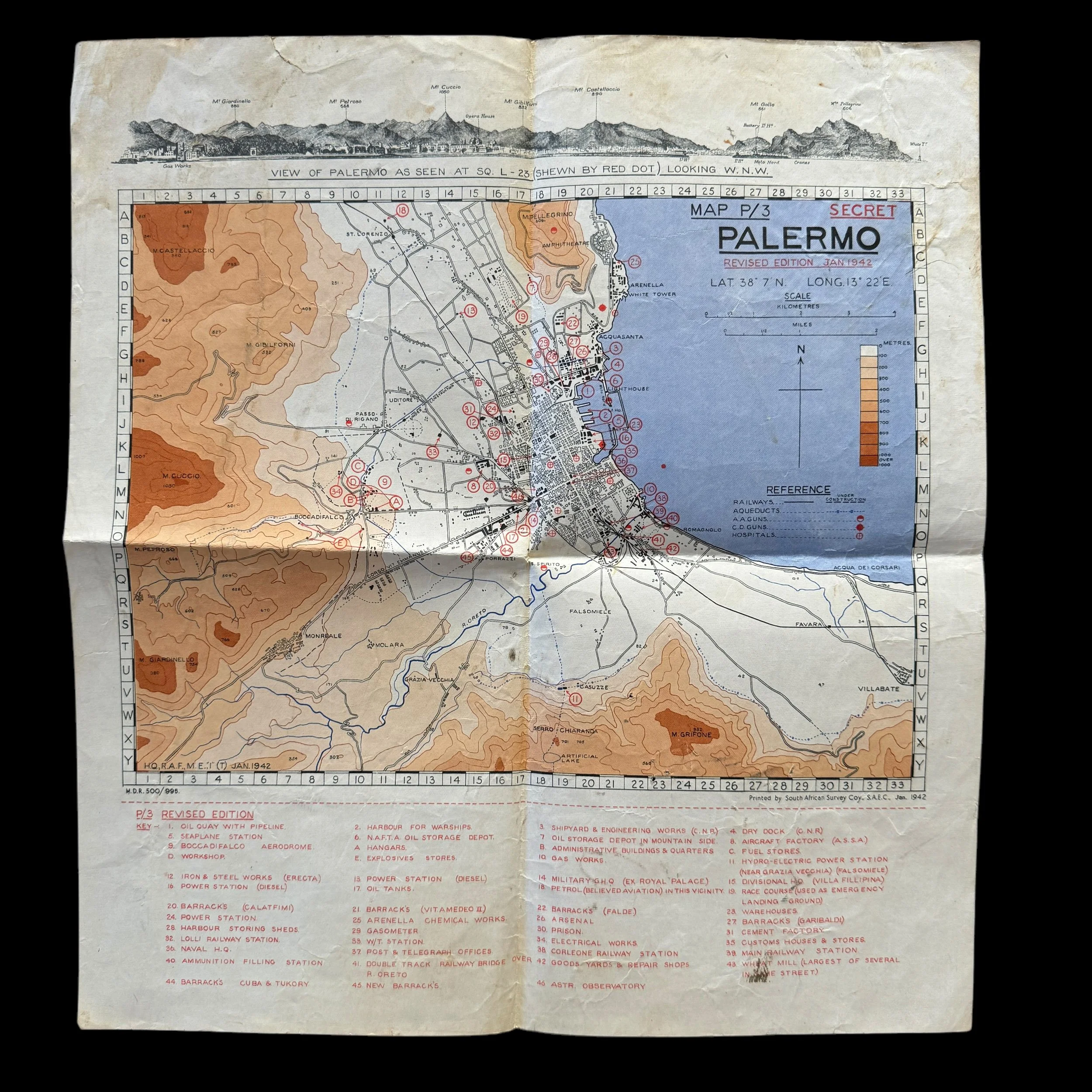
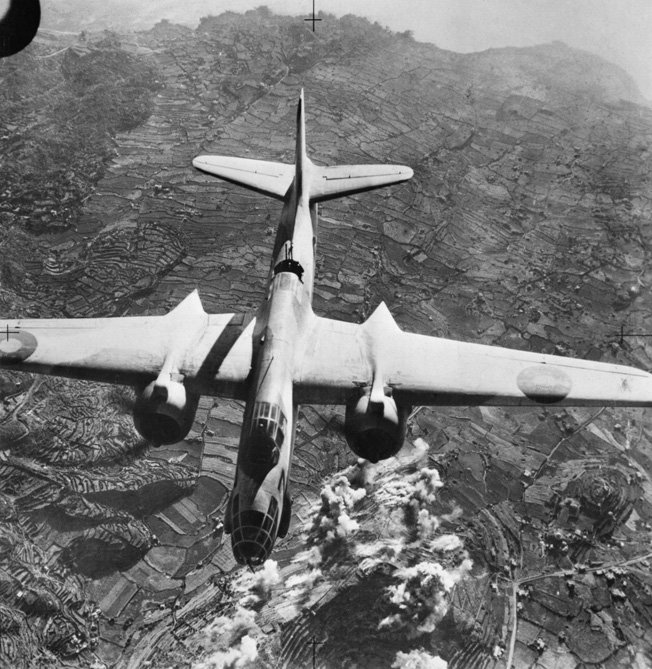
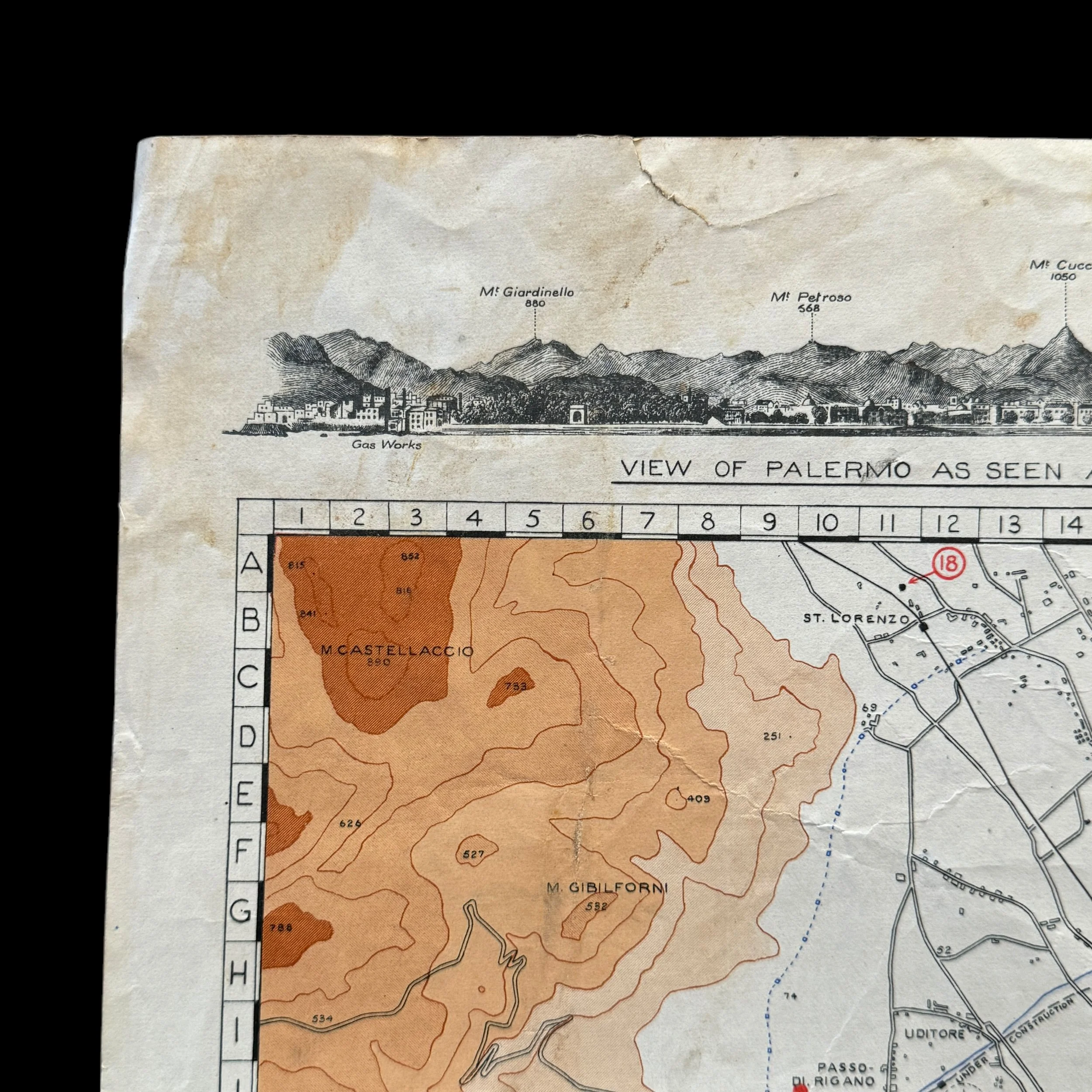

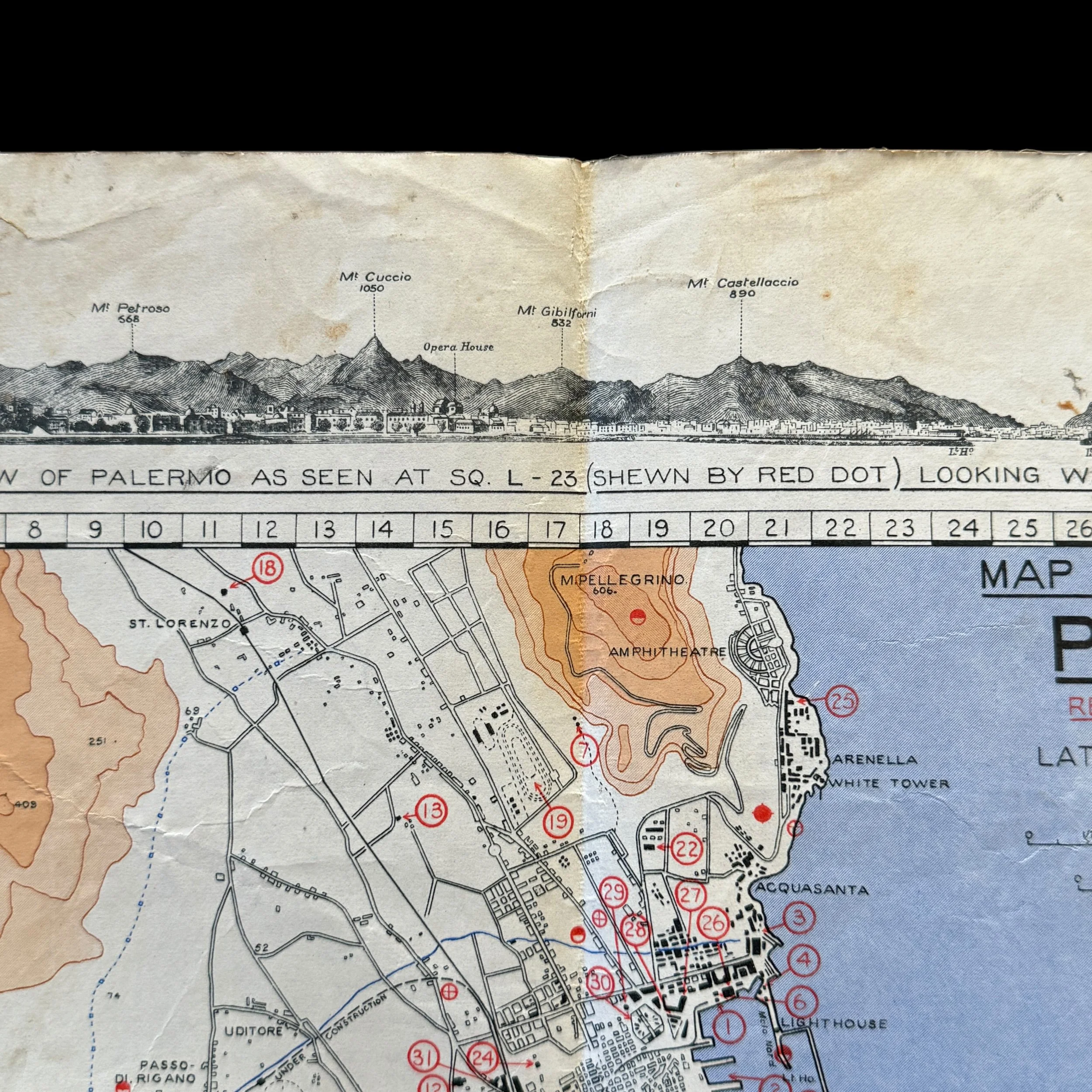
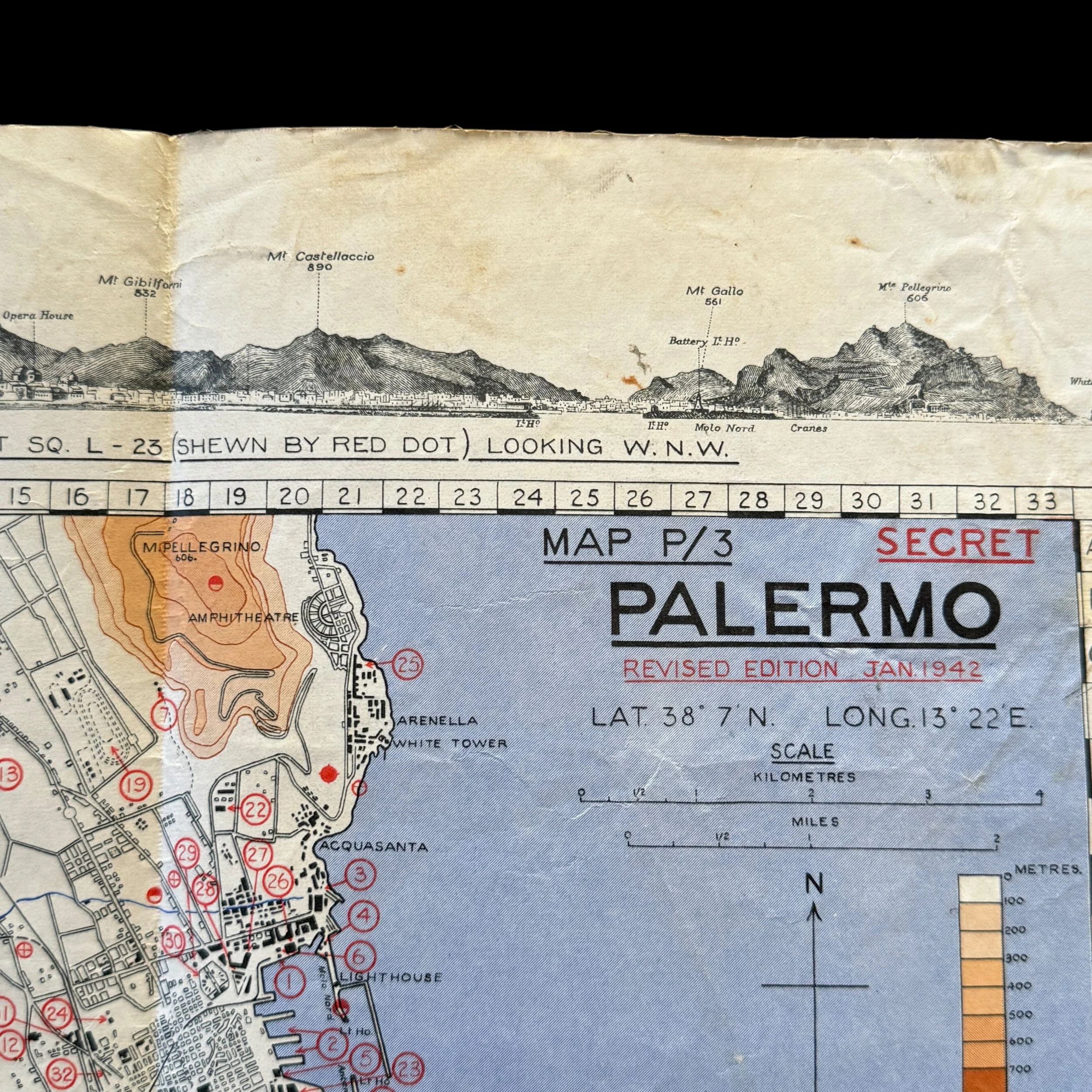
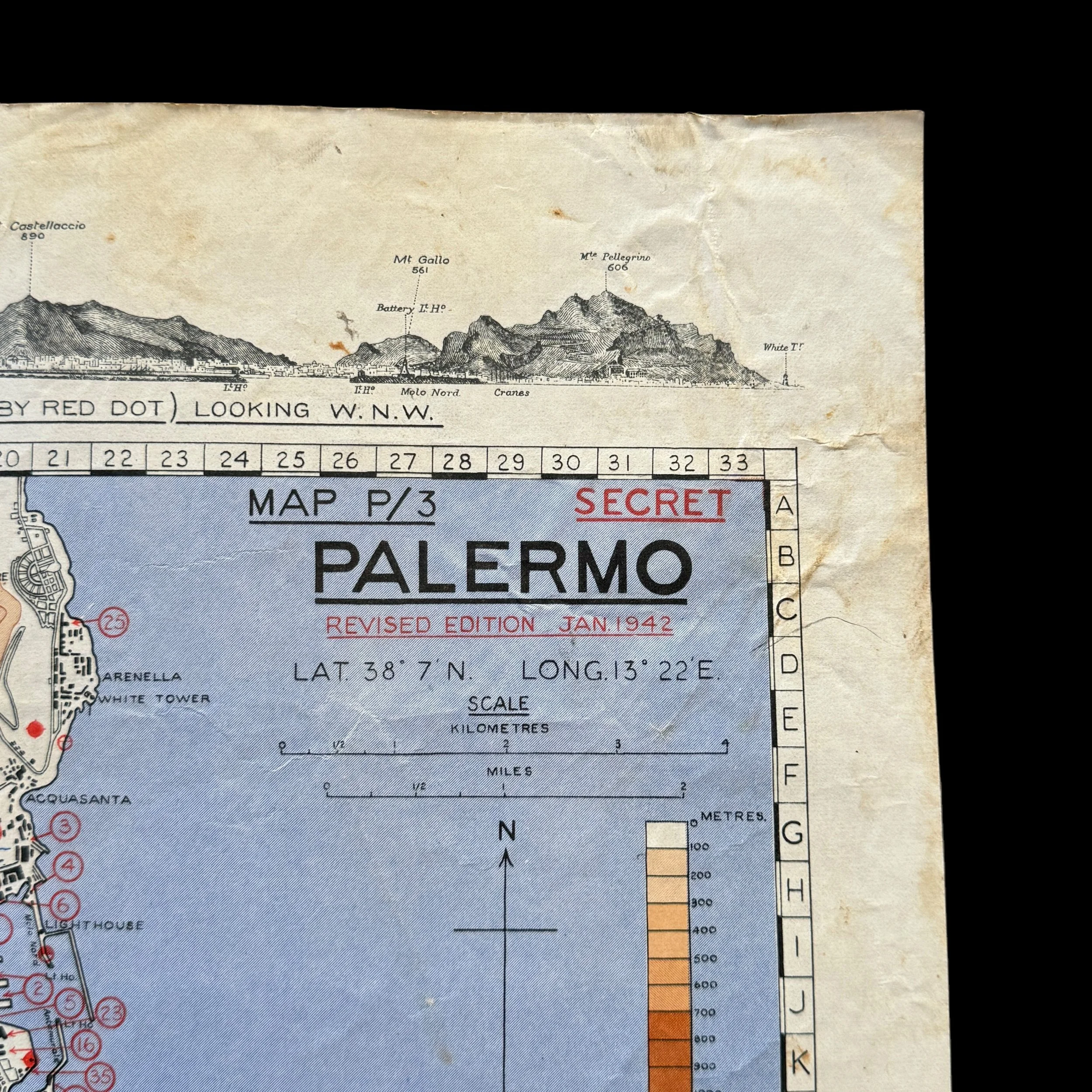
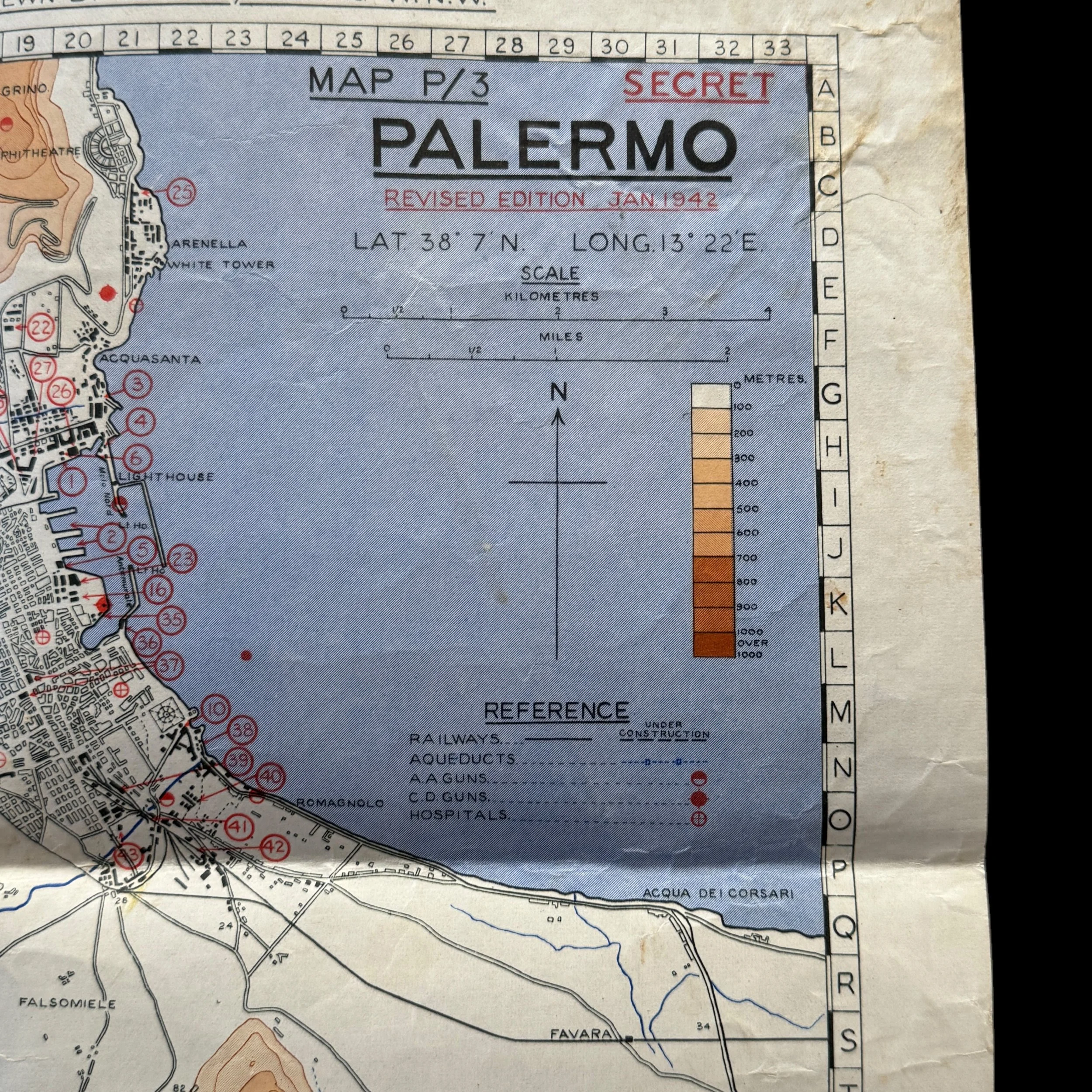
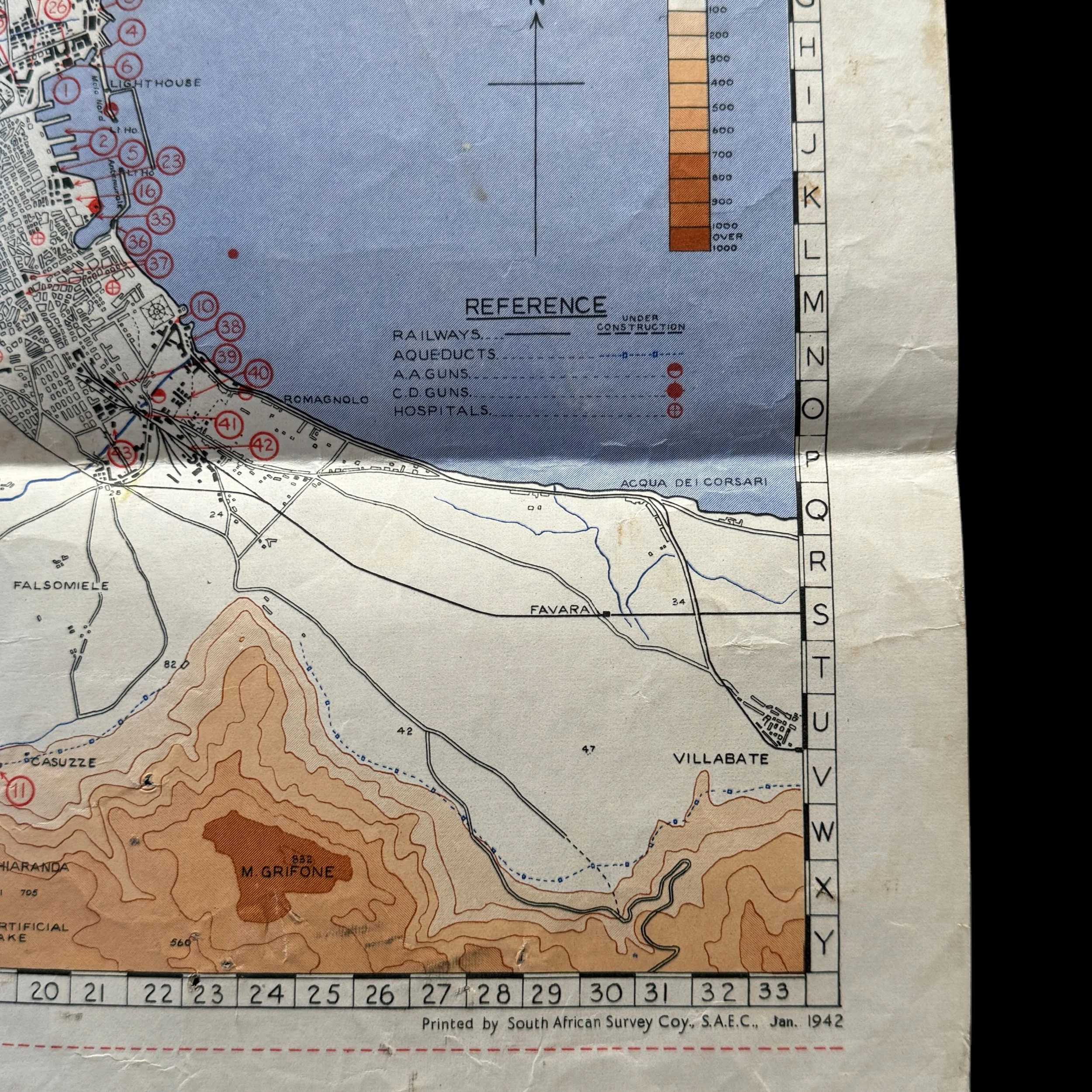
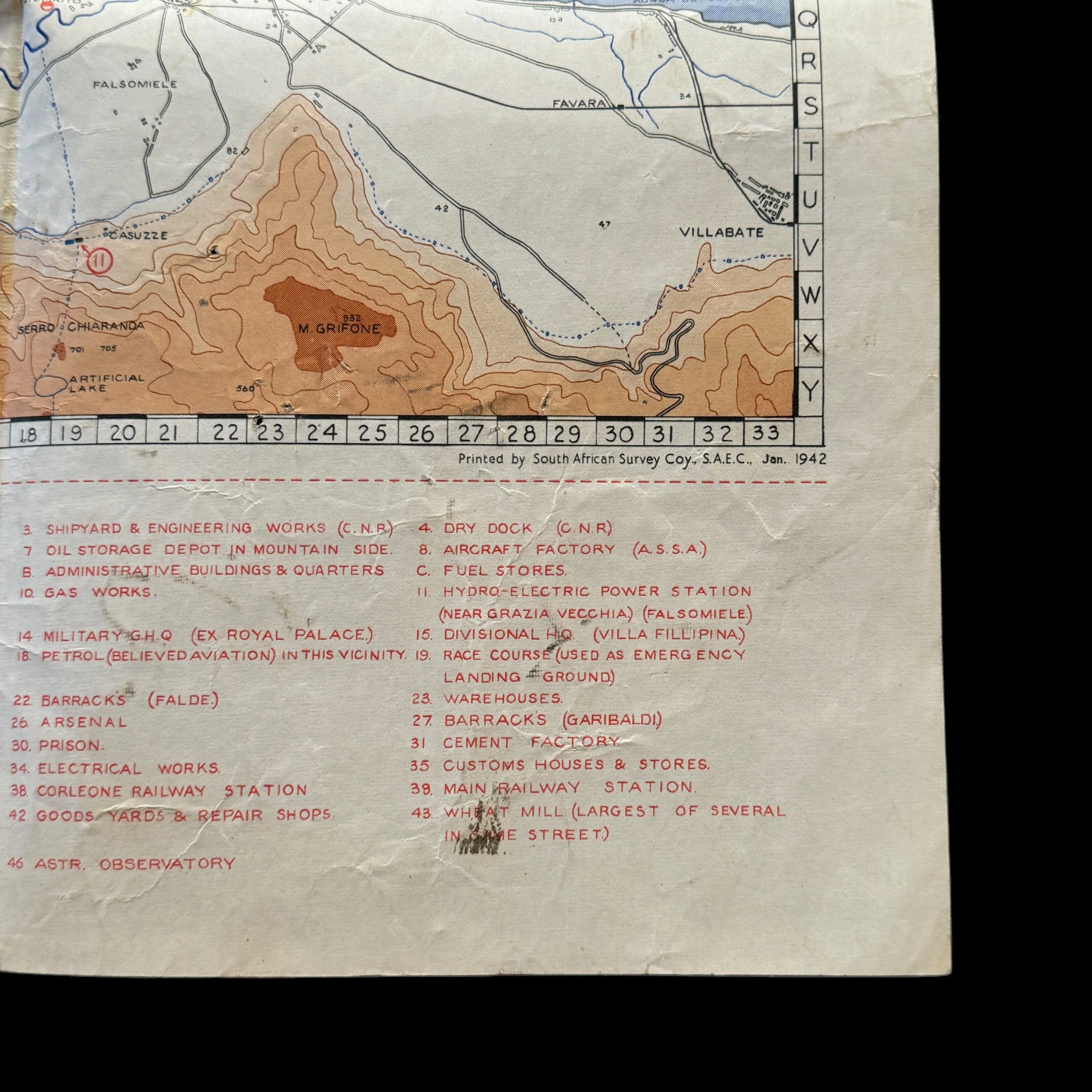

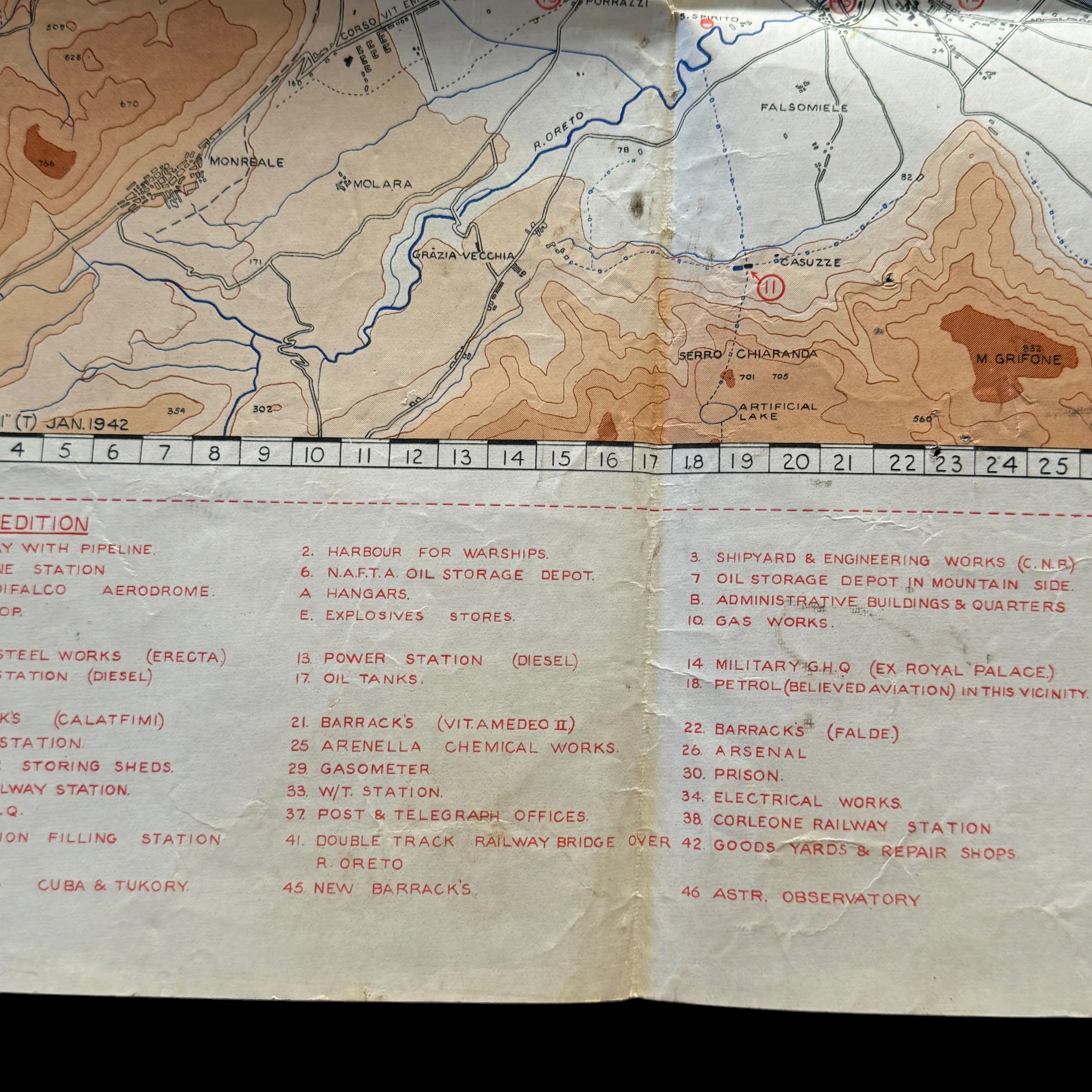
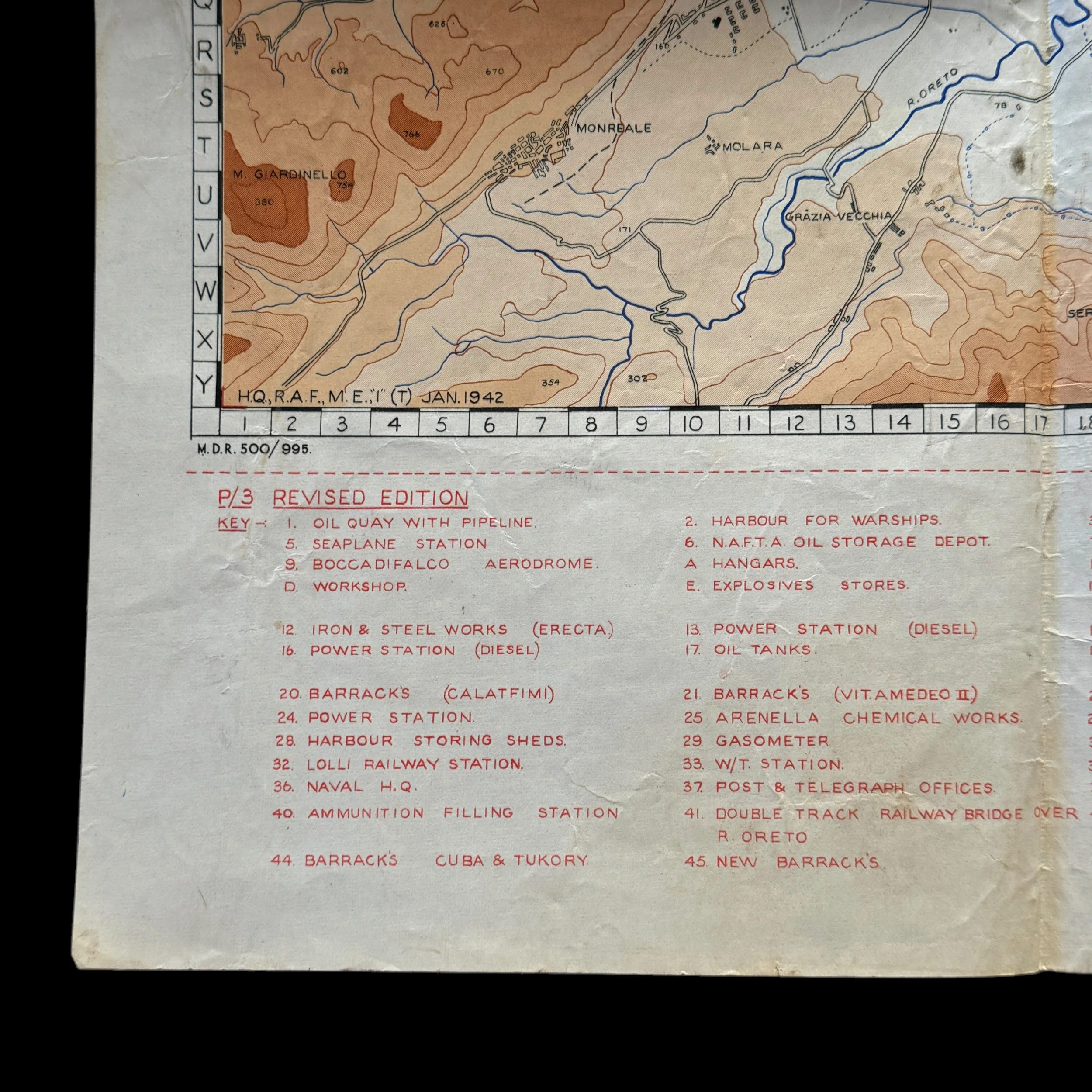
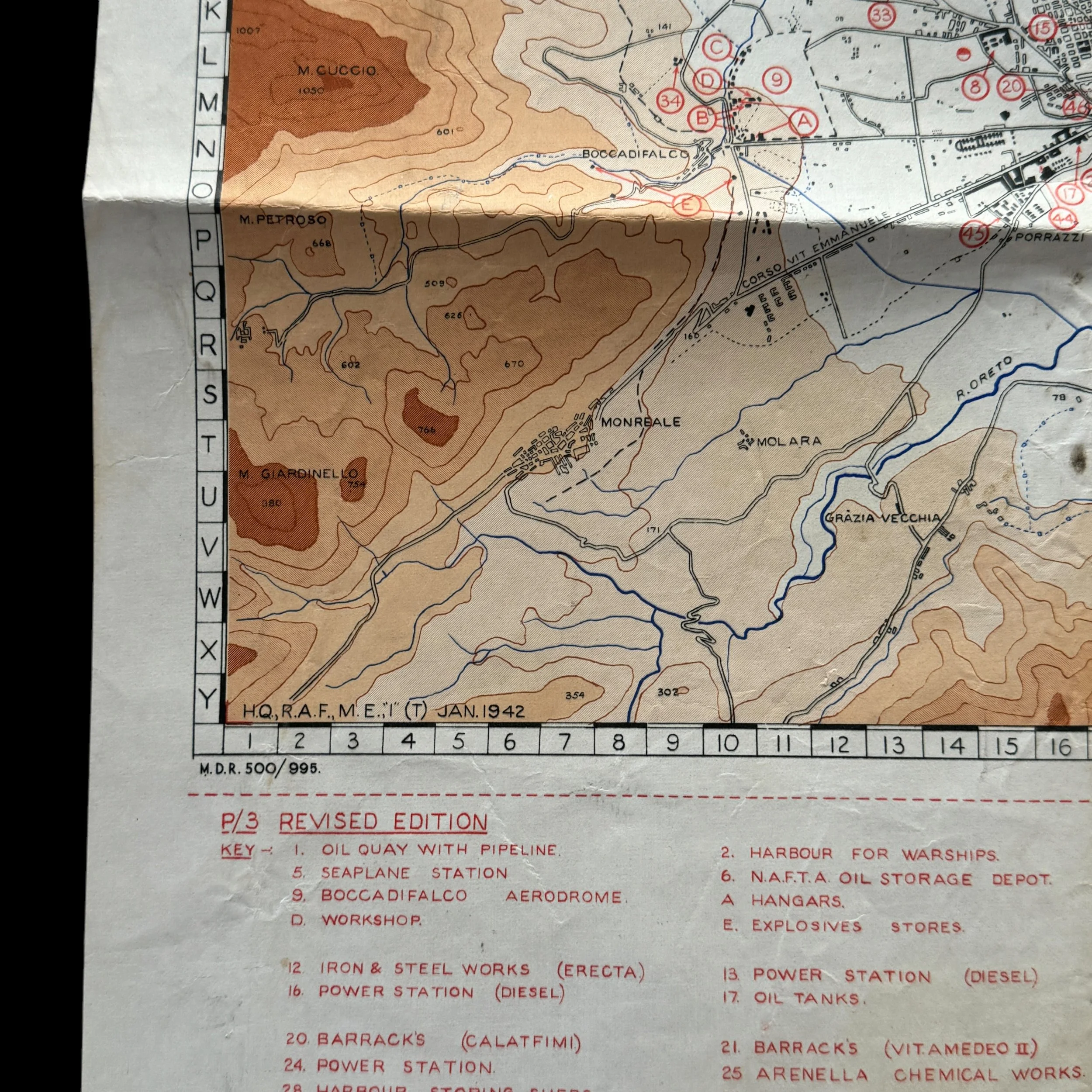
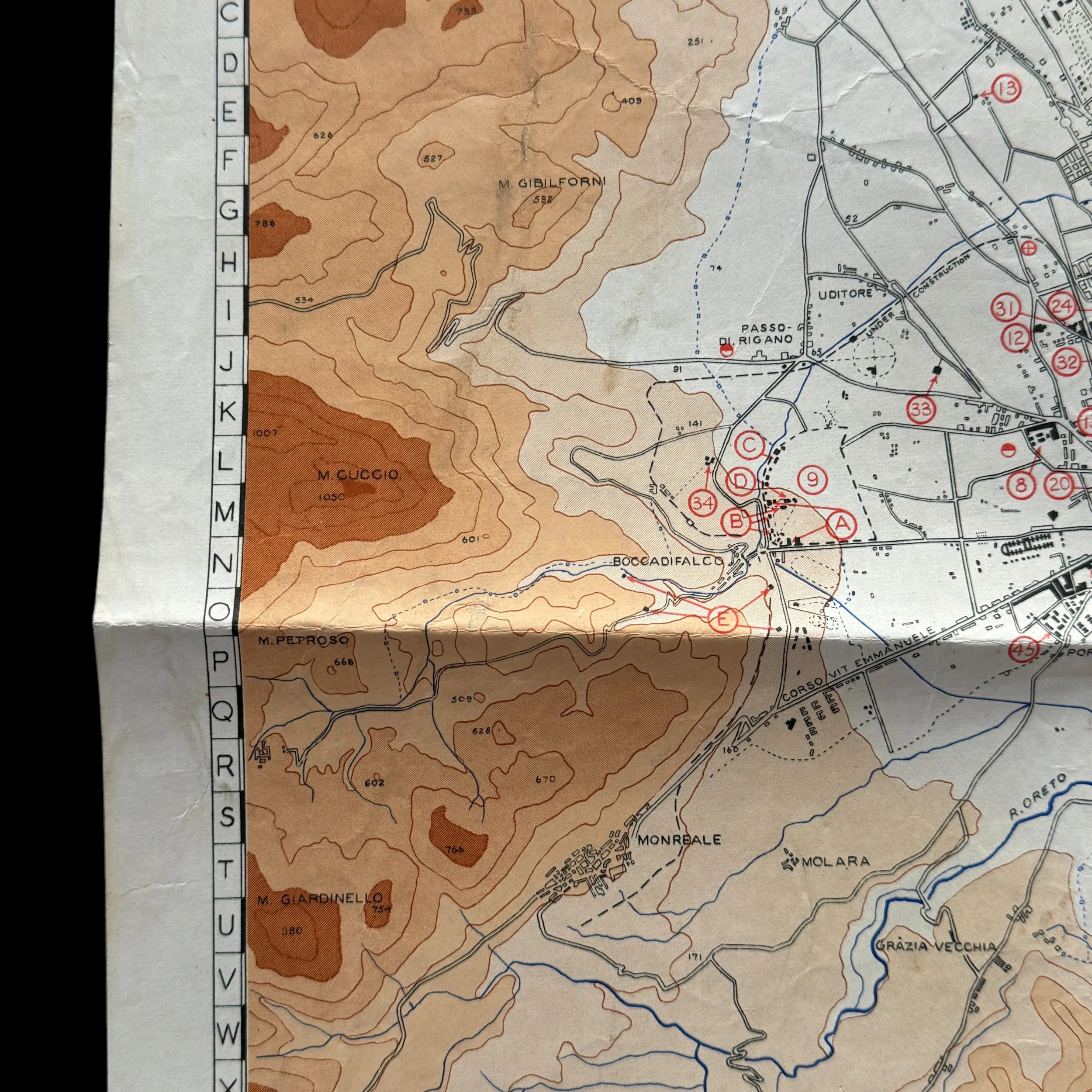
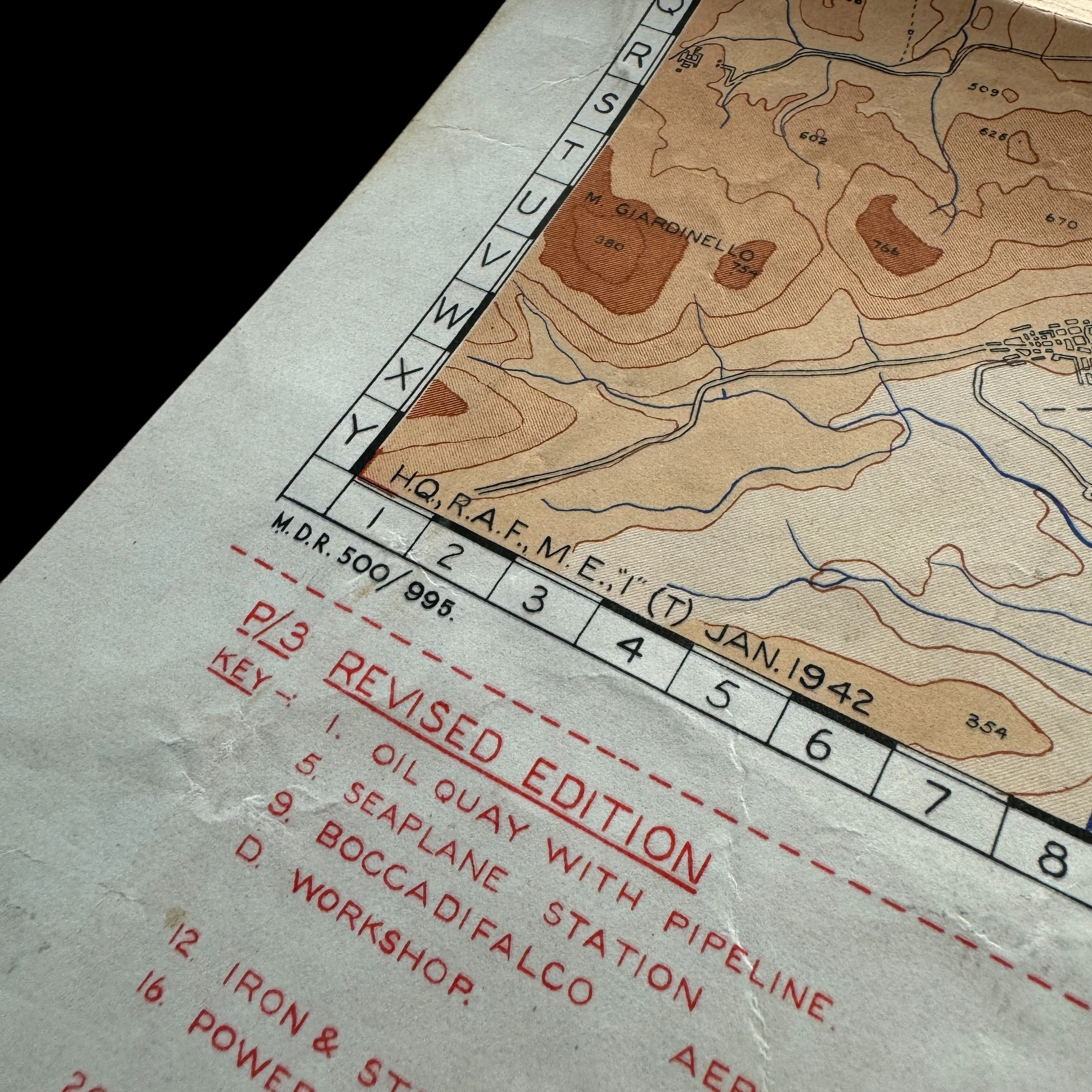
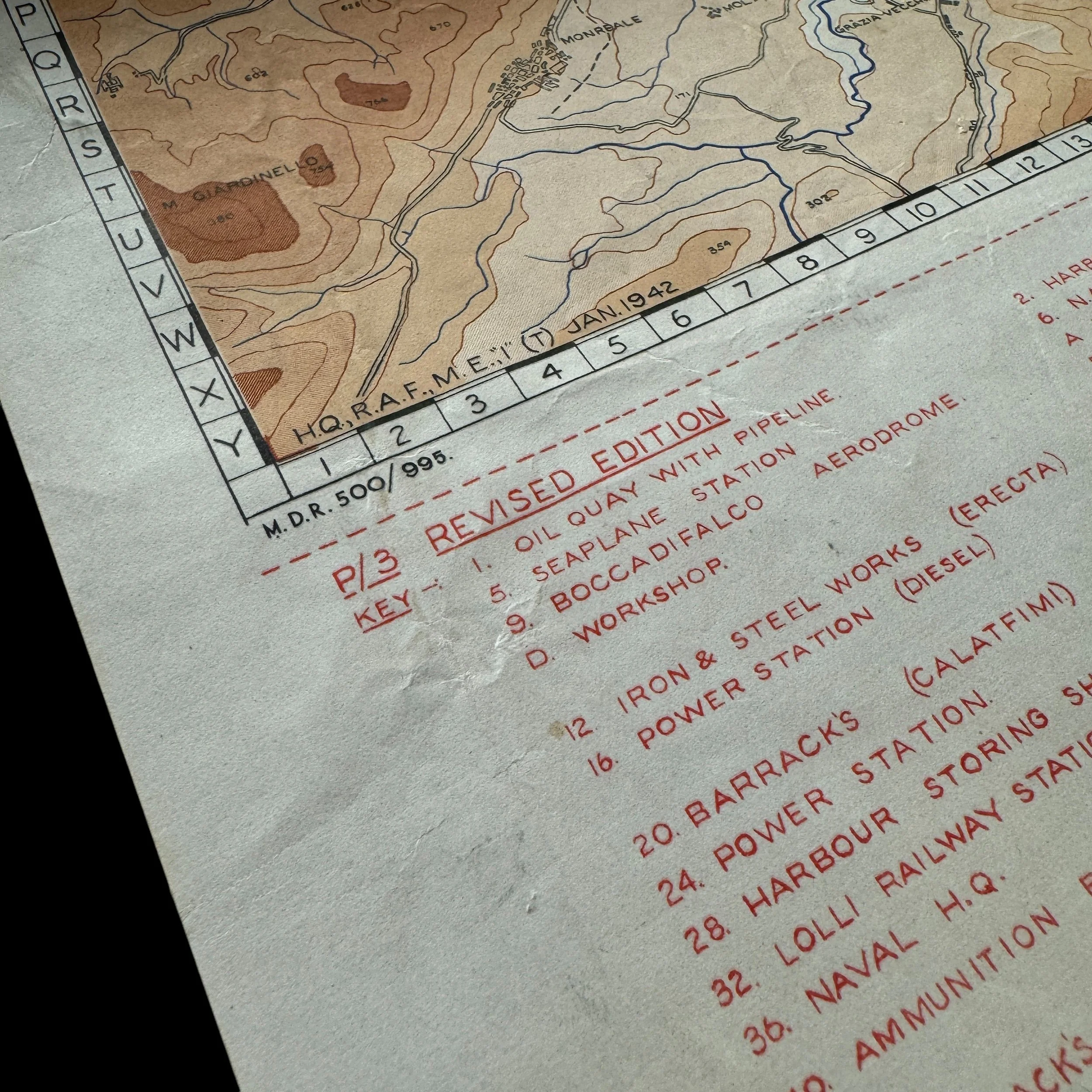
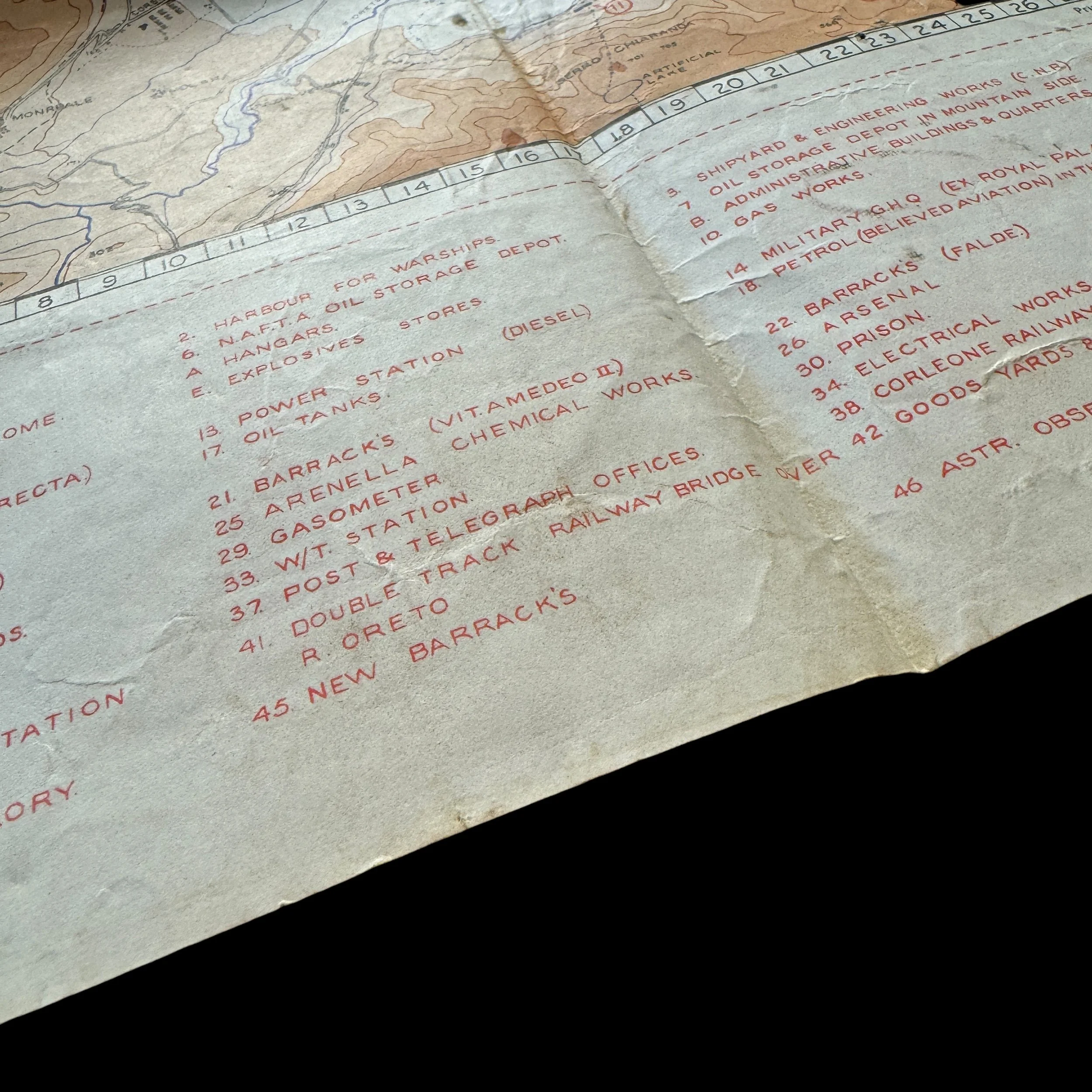
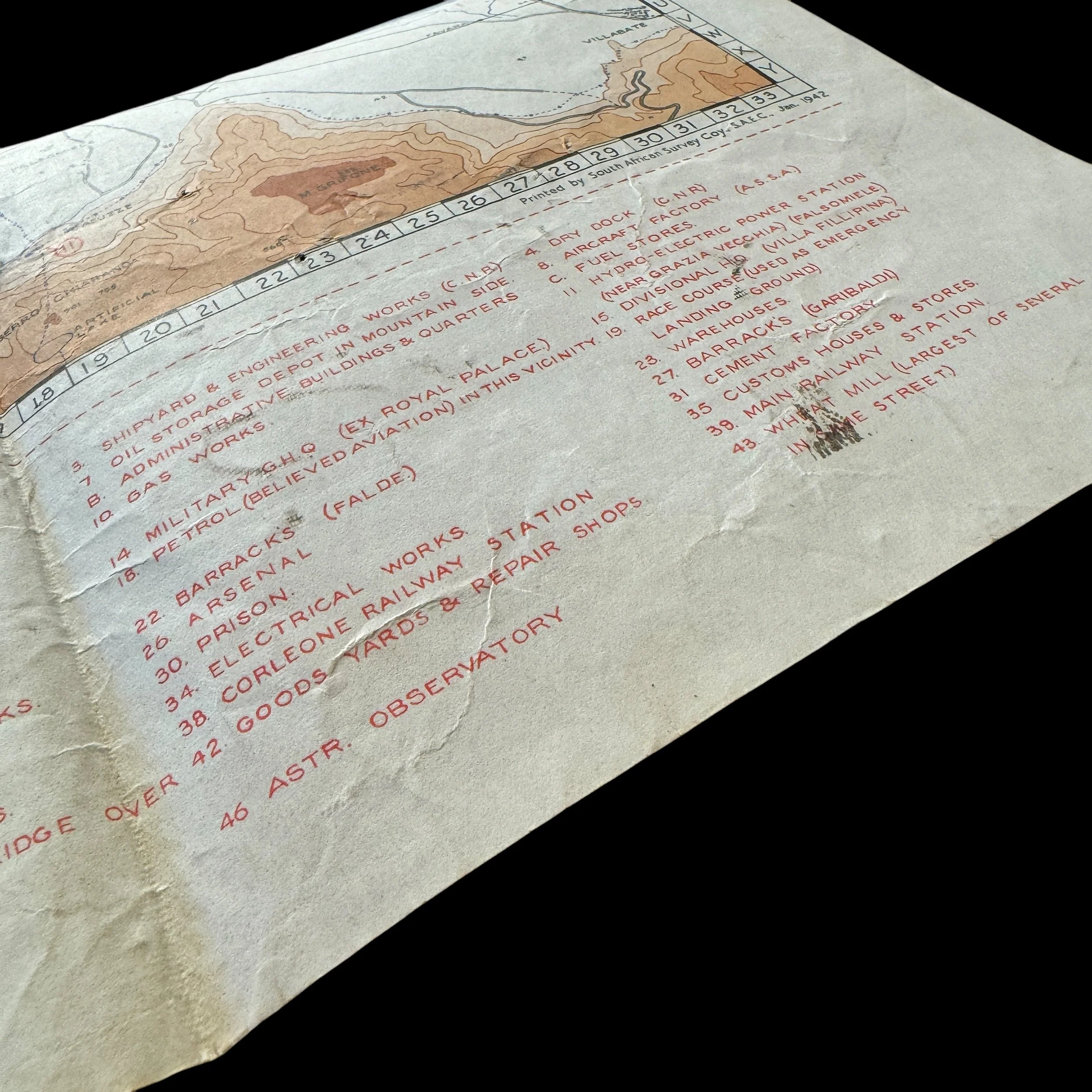
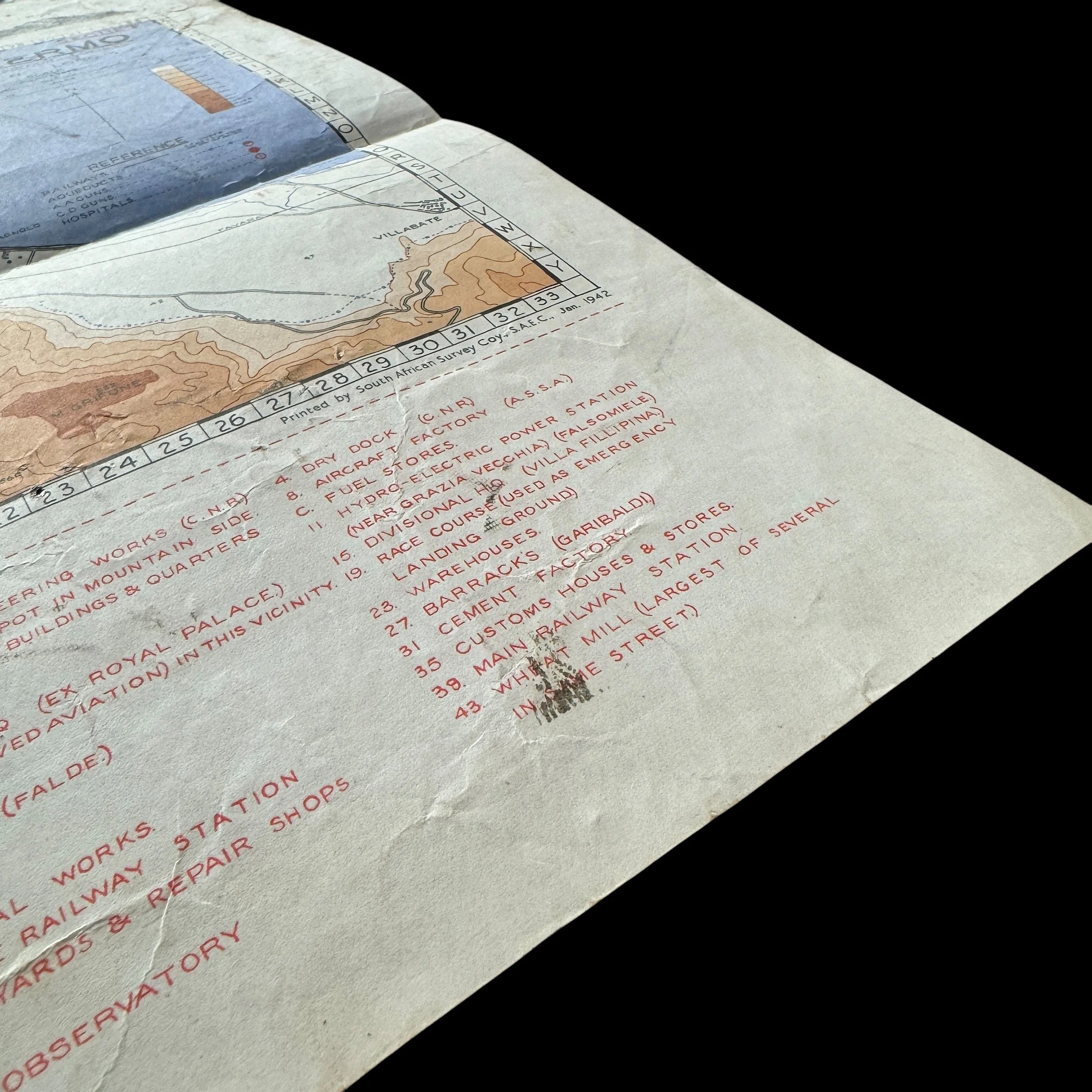
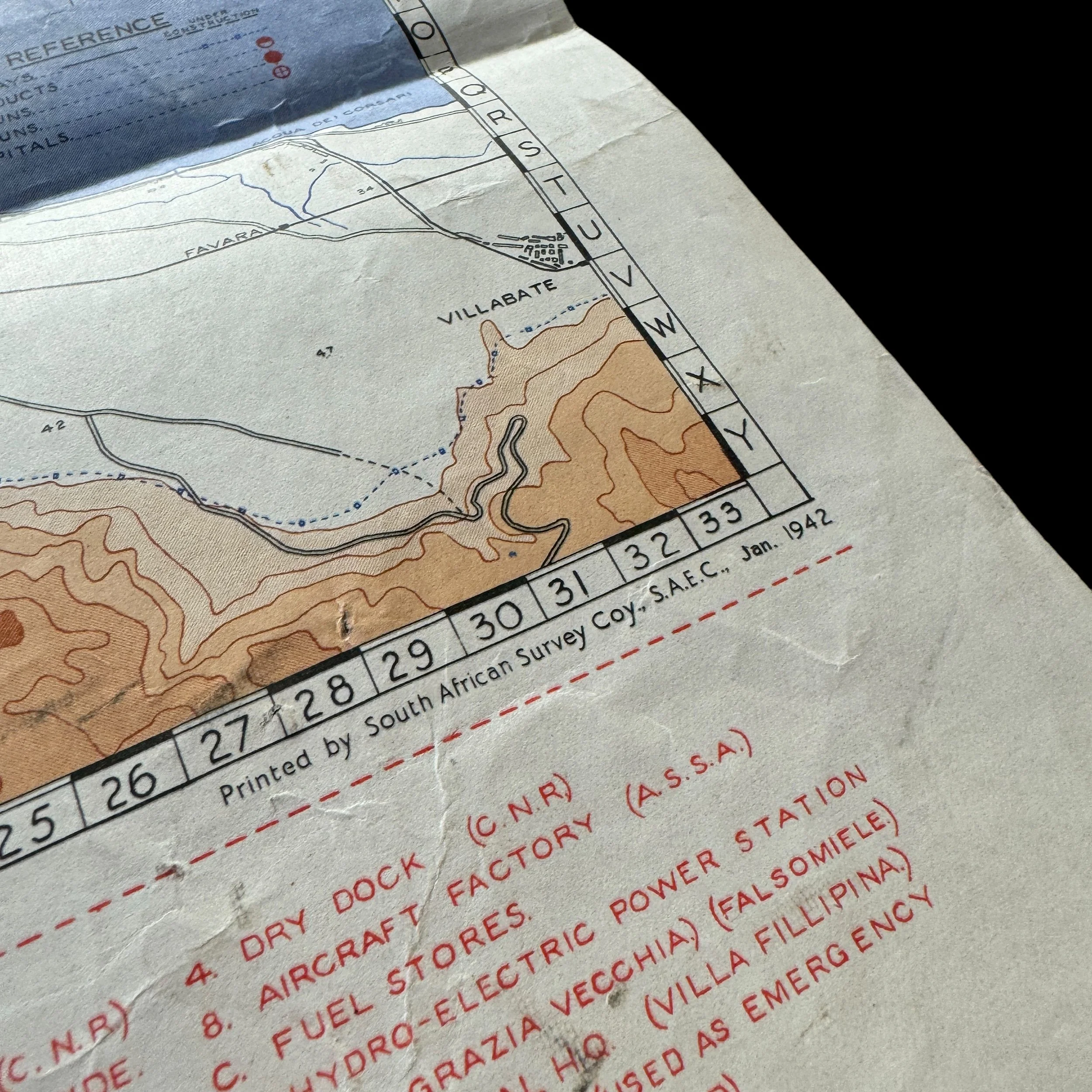
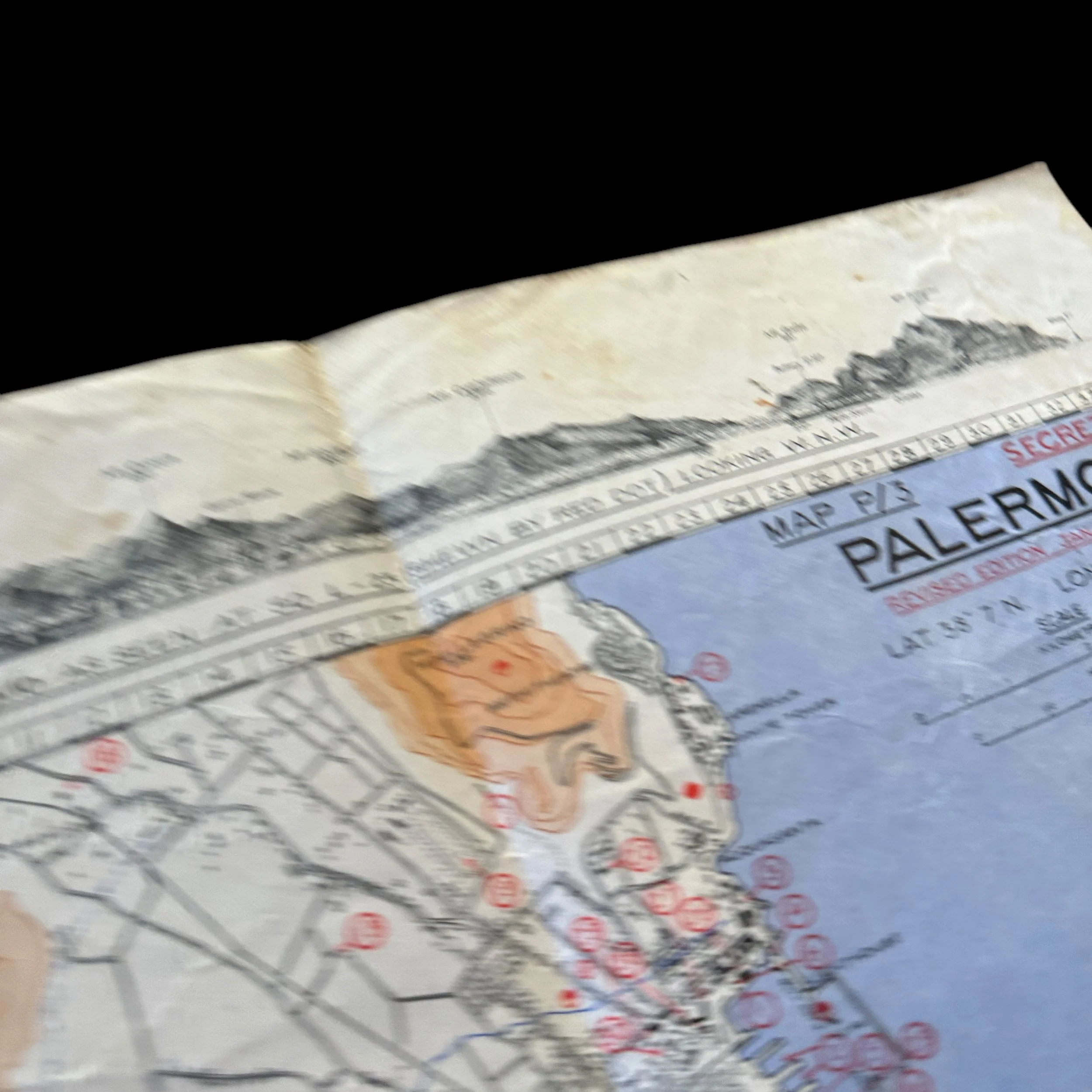
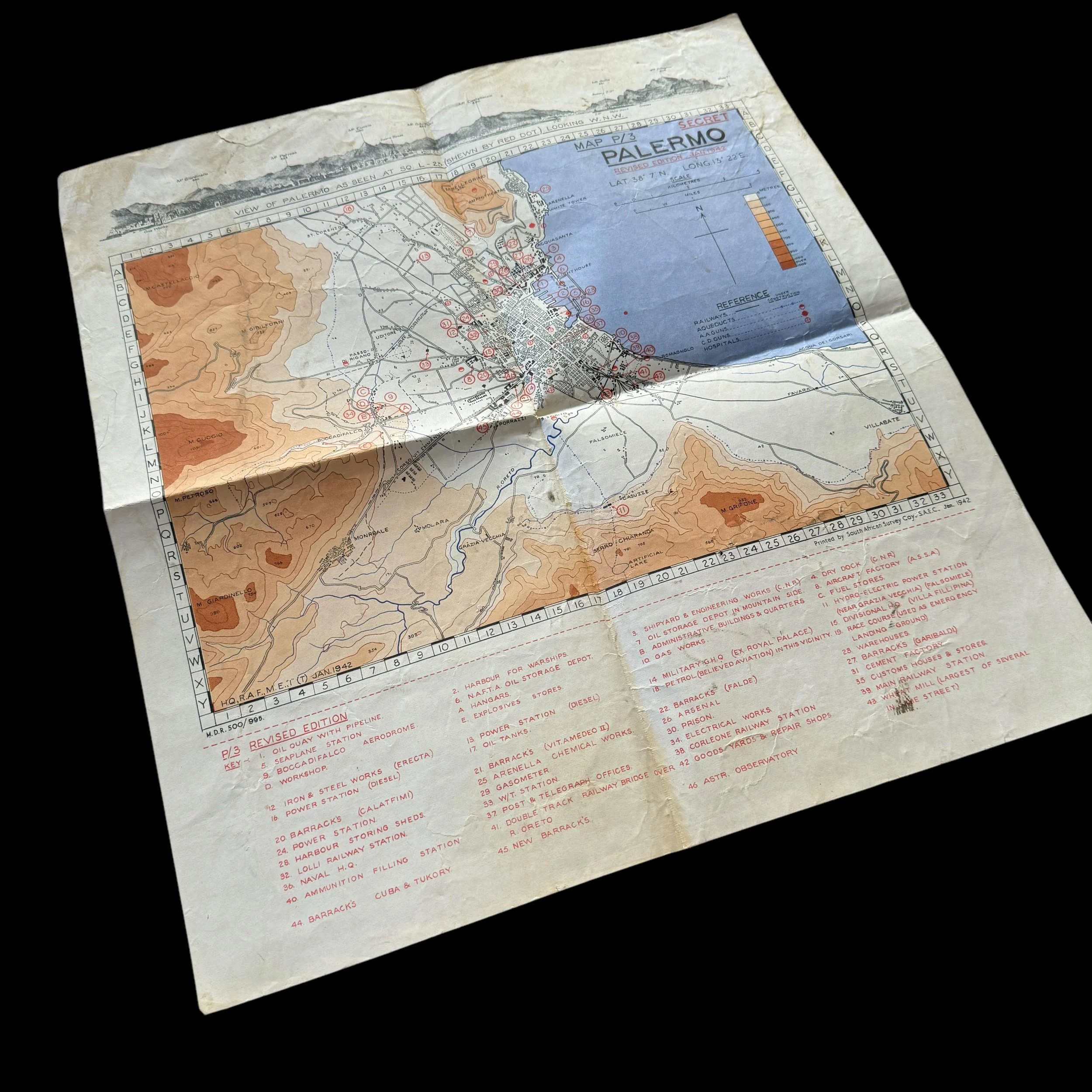
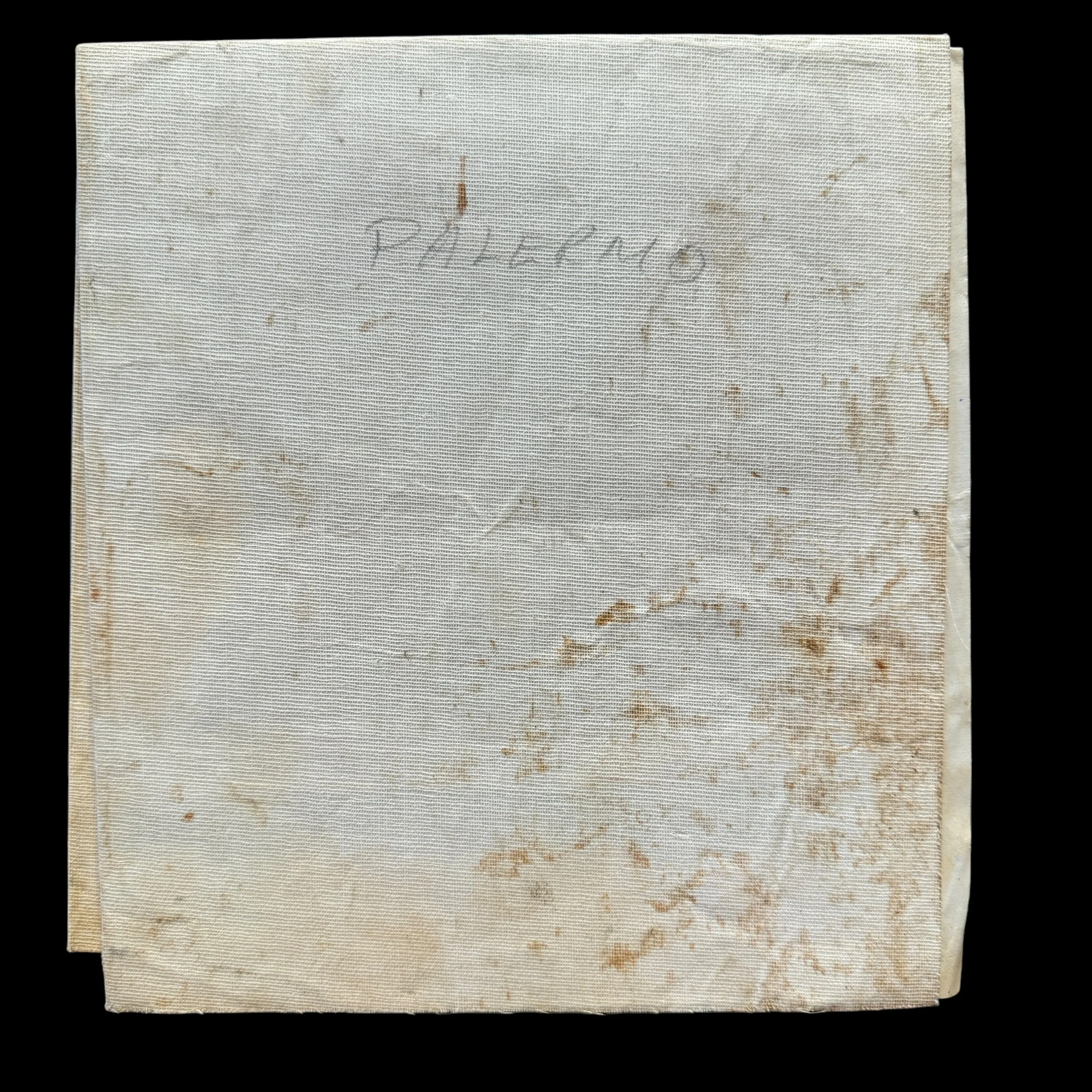
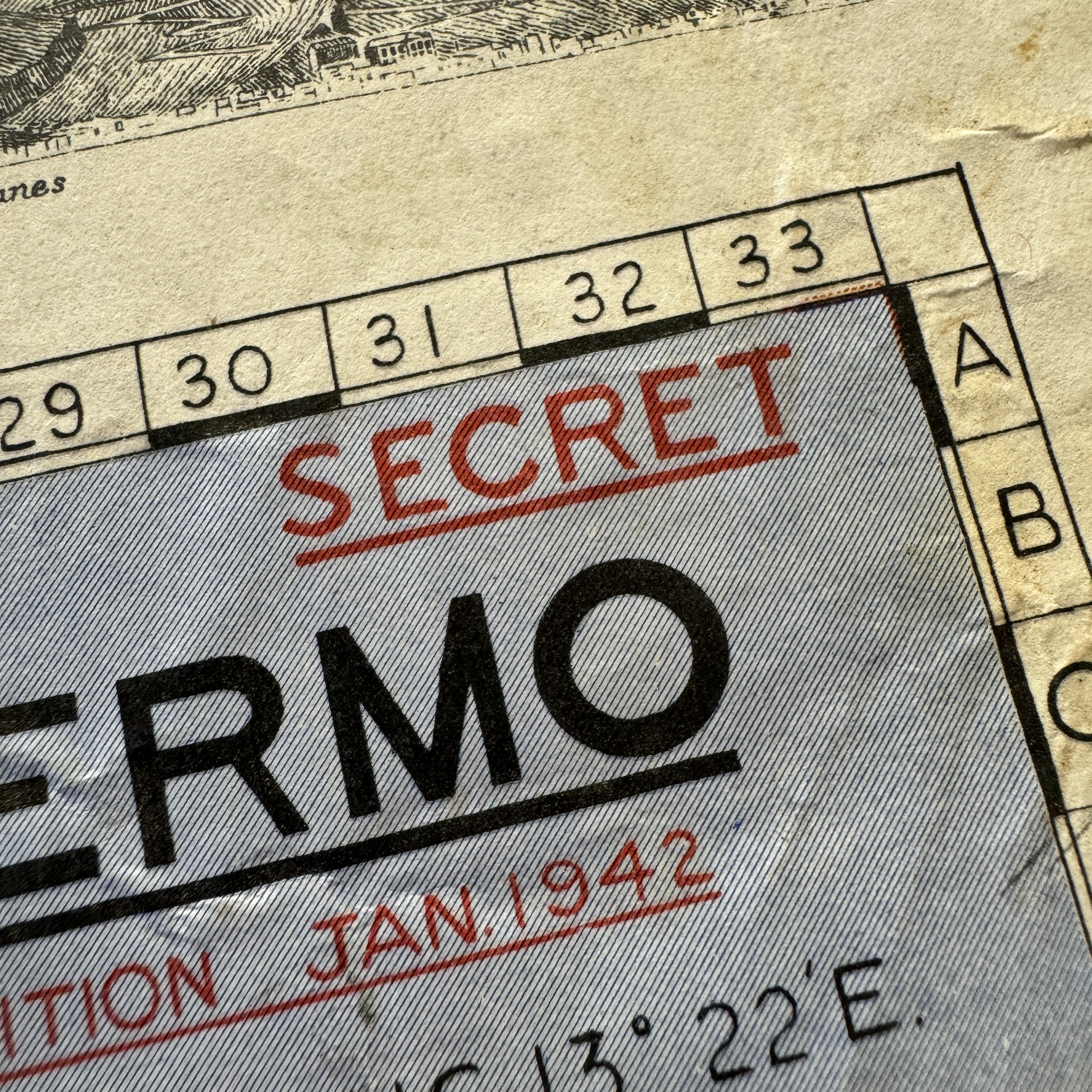







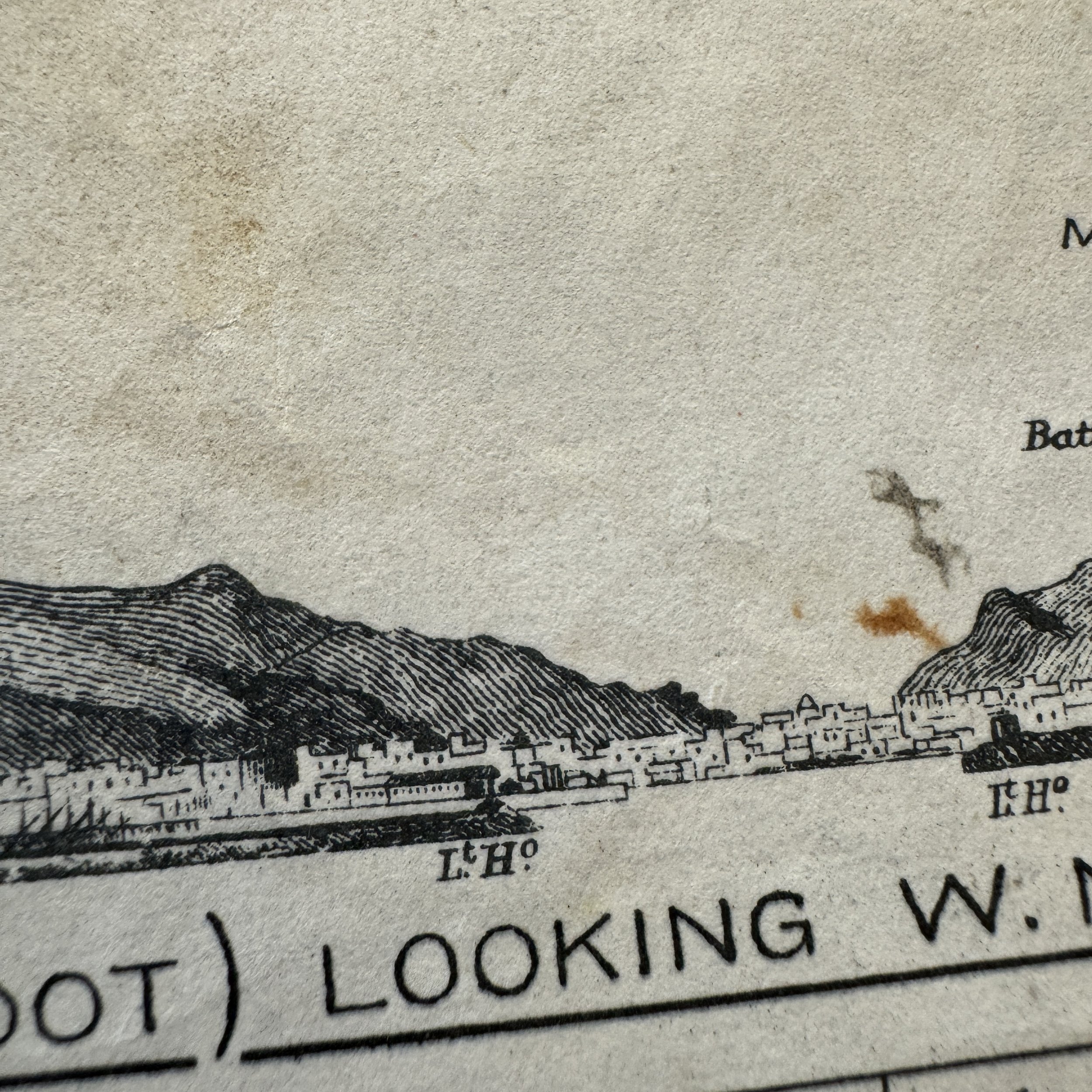



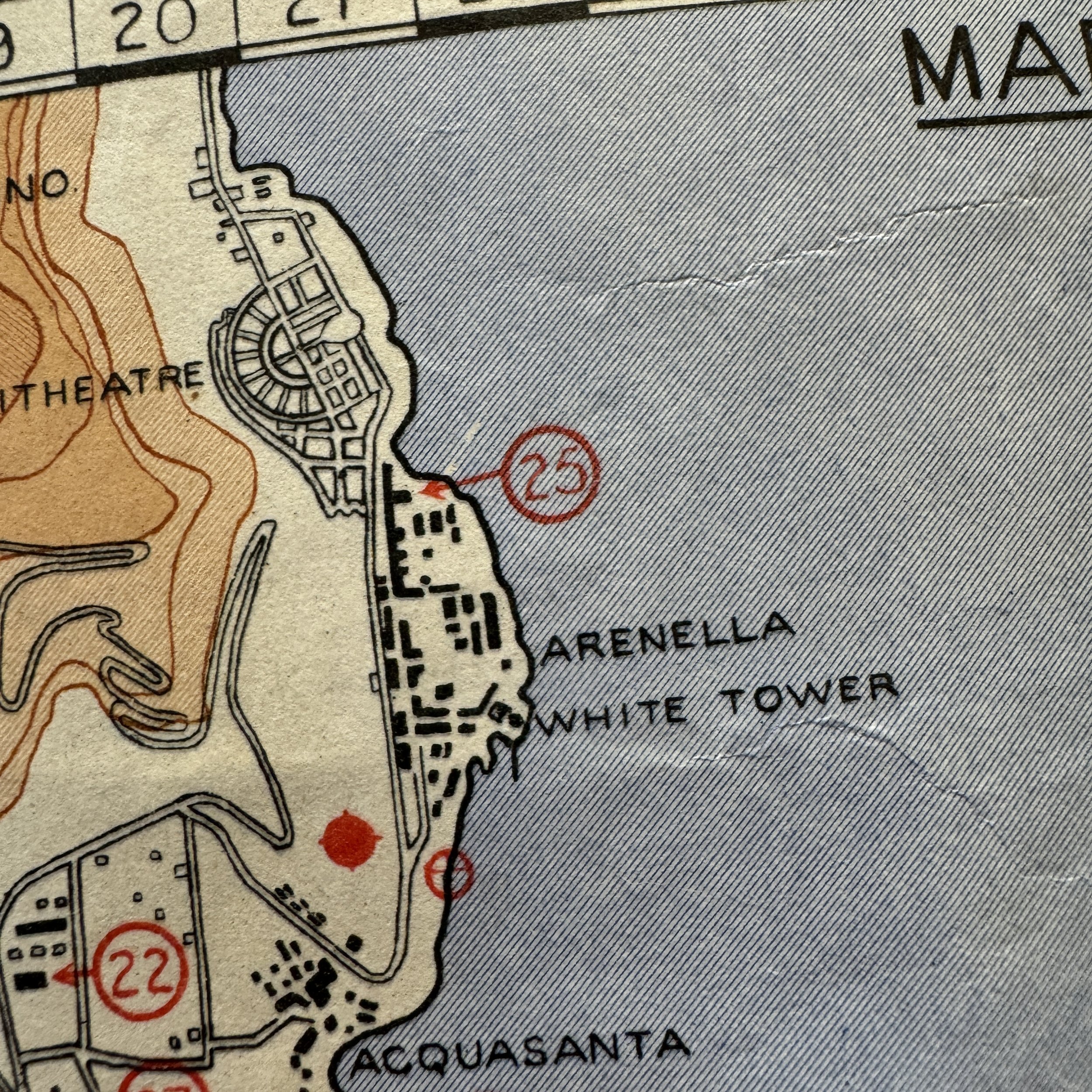

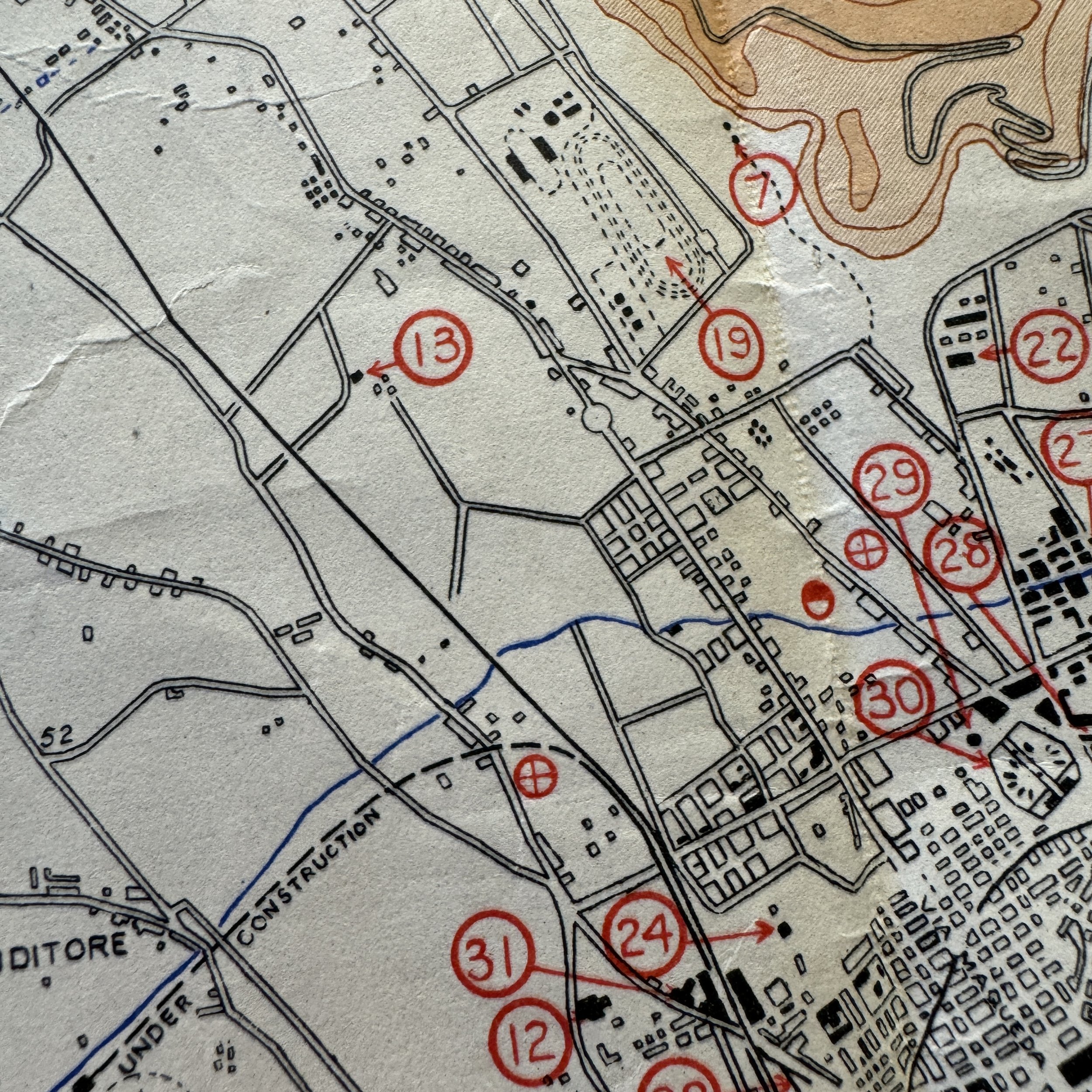




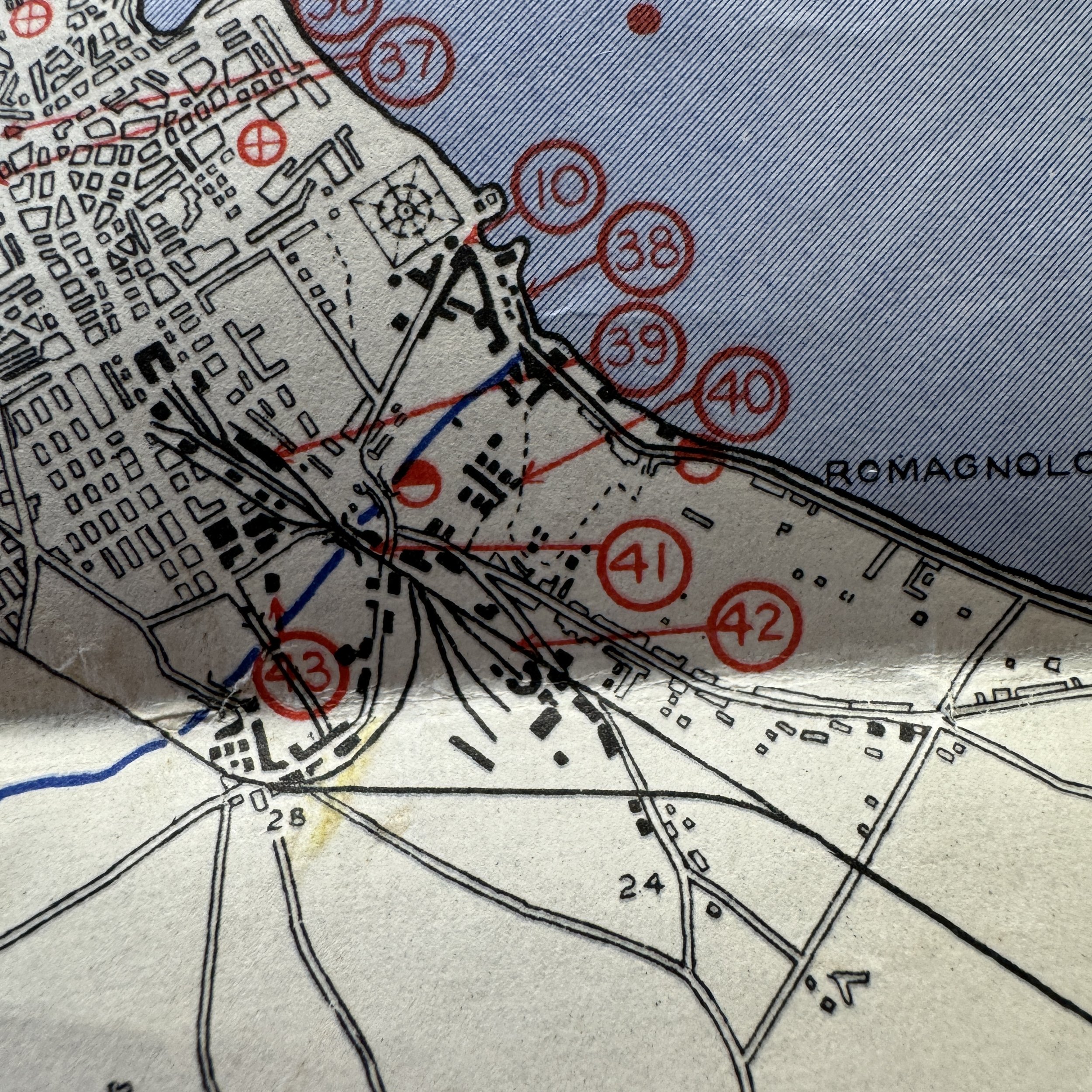
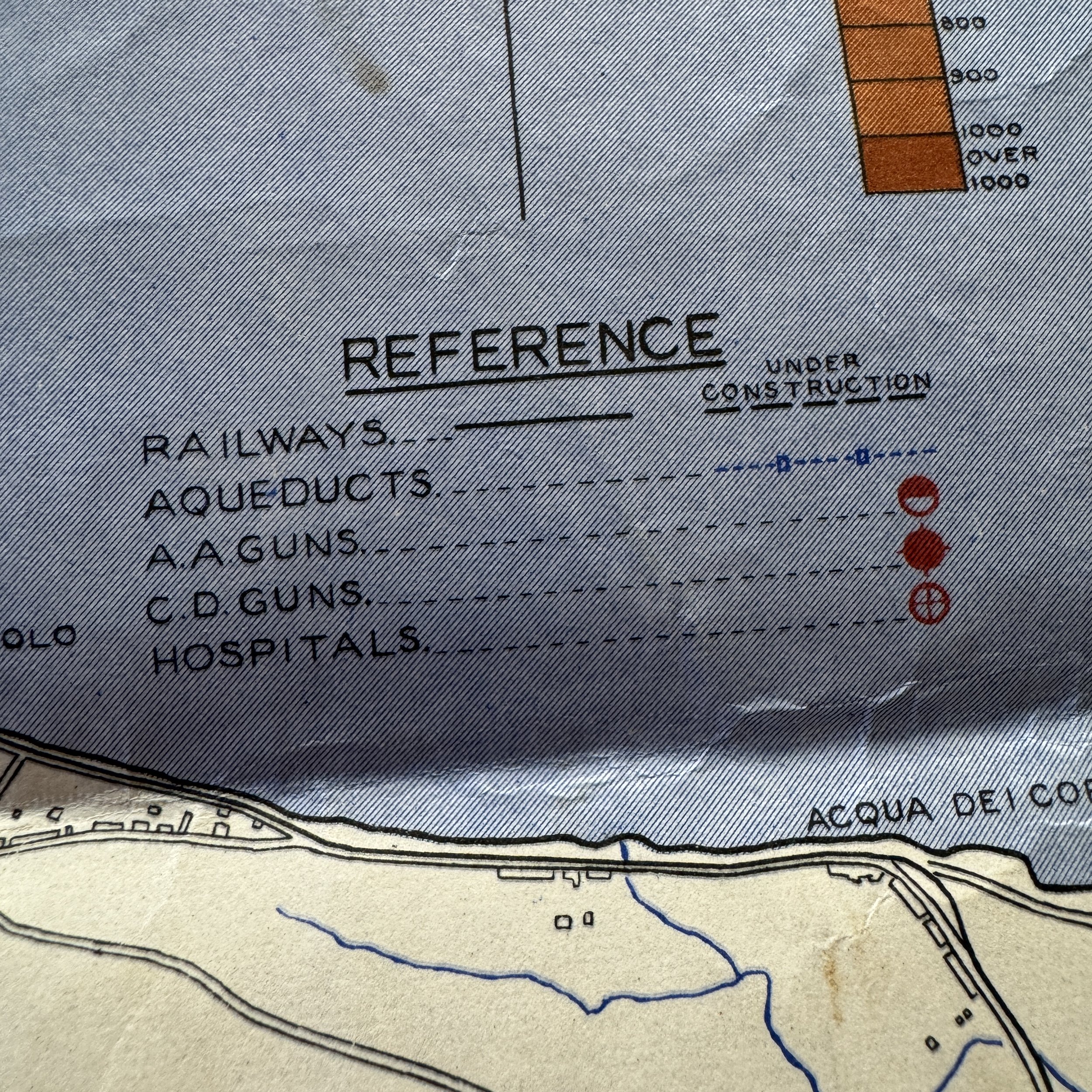





VERY RARE! WWII 1942 "SECRET" Royal Air Force Aerial Bombing Raid Target Map of Palermo Sicily
Comes with a hand-signed C.O.A.
Size: 15.5 × 17 inch
This extraordinary, museum-grade artifact is an original World War II Royal Air Force (Headquarters) Bombing Raid Map of Palermo, Sicily, dated 1942 and marked “SECRET.” It represents a critical piece of Allied strategic planning in the Mediterranean Theater during one of the pivotal moments of the war—the buildup to Operation Husky, the Allied invasion of Sicily in July 1943.
Created and utilized at the height of the Allied air campaign against Axis-held Sicily, this rare and highly detailed combat map was used by both the Royal Air Force and the United States Army Air Forces (USAAF). It guided bombing missions targeting key military, logistical, and industrial sites in and around Palermo, while also marking the locations of German anti-aircraft positions and coastal defenses. These joint RAF and USAAF air raids played a vital role in softening Axis strongholds in preparation for what would become the largest amphibious invasion of the war to date.
What sets this target map apart is its inclusion of an exceptionally rare and detailed horizon sketch of Palermo. Designed to give pilots, navigators, and bombardiers a visual reference of the city’s skyline as seen from the air during approach, this feature served as an essential orientation tool during missions—especially in conditions of limited visibility or during night operations. Such sketches offered a critical tactical advantage for crews flying Vickers Wellington medium bombers of the RAF, as well as Boeing B-17 Flying Fortress and Consolidated B-24 Liberator heavy bombers of the USAAF, enabling accurate navigation and target acquisition under combat conditions.
At the time, Palermo was a vital strategic center for Axis operations in the Mediterranean, functioning as a crucial naval port, transportation hub, and supply depot. The sustained Allied bombing campaign throughout late 1942 and into 1943 was instrumental in disrupting German and Italian defenses, damaging airfields, rail lines, and fuel depots, and diminishing enemy morale. These efforts paved the way for the success of Operation Husky, which began on the nights of July 9–10, 1943. The operation marked the beginning of the Allied liberation of Italy and contributed directly to the collapse of Mussolini's Fascist regime later that same month.
Because of the classified nature of these missions and the limited production of such specialized operational maps, very few have survived. Even fewer include the rare horizon sketch feature, making this artifact not only historically significant but exceptionally scarce. It stands as a tangible reminder of the coordination, innovation, and sacrifice behind the Allied air campaign and serves as a powerful link to one of World War II’s most decisive and complex operations.
The Bombing of Palermo During World War II: A Crucial Target in the Allied Mediterranean Campaign (1942–1943)
The city of Palermo, located on the northwestern coast of Sicily, Italy, became a vital strategic and symbolic target during World War II, particularly in the years 1942 to 1943. As the capital of Sicily and a major port city in the Mediterranean theater, Palermo’s harbor, rail infrastructure, and coastal defenses played an essential role in supporting Axis operations in North Africa and southern Europe. From late 1942 through the summer of 1943, the Royal Air Force (RAF) and the United States Army Air Forces (USAAF) conducted extensive bombing raids against Palermo as part of the Allied effort to weaken Axis power in the Mediterranean and prepare for the invasion of Italy. These raids culminated in the capture of the city in July 1943 during Operation Husky, the Allied invasion of Sicily.
Strategic Importance of Palermo
Palermo’s importance stemmed from both its geographic location and its logistical value. Situated near the Tyrrhenian Sea, it served as a crucial naval and supply base for Axis forces, with its port capable of handling warships, merchant vessels, and military convoys. The port was outfitted with dry docks, fuel depots, and submarine pens, making it a hub for resupply and repair of both German and Italian naval assets. Additionally, rail lines connecting Palermo to the interior of Sicily enabled the transport of troops, munitions, and supplies across the island and further south to Axis forces fighting in Tunisia and Libya.
With the momentum of war shifting in favor of the Allies in 1942, particularly after the Second Battle of El Alamein and Operation Torch, it became clear that North Africa was slipping from Axis control. In order to secure the Mediterranean and open the pathway for an eventual invasion of the Italian mainland, Allied planners turned their attention to Sicily. As a part of this broader strategic vision, bombing Palermo would achieve several goals: cripple Axis supply lines, disrupt troop movements, demoralize Italian forces, and soften defenses in advance of an amphibious invasion.
Early RAF Bombing Raids (1942)
The first sustained bombing operations against Palermo began in late 1942, primarily led by the Royal Air Force's Bomber Command, which had already gained experience striking Axis targets in Libya and Tunisia. At this stage of the war, the RAF was conducting nighttime strategic bombing, favoring high-altitude raids to minimize aircraft losses. Flying from bases in Malta, the Middle East, and eventually Tunisia, RAF bombers began targeting Palermo’s harbor facilities, warehouses, and rail yards.
The Wellington and Halifax bombers used by the RAF were capable of carrying significant bomb loads, and although limited in precision, they inflicted considerable damage on infrastructure. Initial raids faced heavy resistance from Italian anti-aircraft batteries and night fighter patrols, but these defenses were stretched thin as more Allied bombers reached operational range. The early RAF raids not only disrupted port activities but also tested the resilience of Palermo’s civil defense and preparedness.
The RAF also coordinated with Special Operations Executive (SOE) missions, using aerial reconnaissance to support sabotage operations by Italian partisans and Allied agents working on the ground in Sicily. The bombing campaigns thus had a dual purpose: direct military destruction and indirect psychological warfare.
Intensification Under U.S. Strategic Bombing (1943)
By early 1943, the United States Army Air Forces (USAAF) had significantly expanded its presence in the Mediterranean theater, especially after the successful landings in North Africa in November 1942 (Operation Torch). The Twelfth Air Force, under the command of General James H. Doolittle, was tasked with coordinating strategic bombing missions over Sicily, Sardinia, and southern Italy.
U.S. bombers, including B-17 Flying Fortresses, B-25 Mitchells, and B-24 Liberators, began hitting Palermo with growing intensity from airfields in Tunisia and Algeria. These raids were more precise and destructive than earlier British efforts, largely due to better daytime visibility and improved bombing techniques using the Norden bombsight.
Key targets and objectives included:
Palermo Harbor: U.S. bombers struck ships, piers, and dry docks, aiming to disable Axis naval capacity.
Fuel Depots and Ammunition Dumps: Targeted to cause secondary explosions and starve Axis forces of critical resources.
Airfields: The Boccadifalco Airfield west of Palermo was a frequent target, used by Axis reconnaissance and fighter squadrons.
Transportation Hubs: Rail stations, bridges, and train depots were systematically destroyed to isolate Palermo from reinforcements.
On May 9, 1943, in one of the most significant raids, dozens of U.S. bombers struck Palermo’s port in a coordinated daylight attack that left much of the harbor in flames. Docked vessels were sunk or damaged, and several fuel and munitions depots exploded, creating massive fireballs visible for miles. The attack also disrupted a convoy intended to ferry supplies to Axis forces in Tunisia, contributing to the Axis surrender in North Africa on May 13.
Another major raid on June 30, 1943, less than two weeks before the Allied landings in Sicily, was intended to paralyze any remaining capacity Palermo had to resist invasion or resupply retreating forces. The bombing was relentless, and by this point, the city's infrastructure was in near-total collapse. Large parts of the city center were reduced to rubble.
The Fall of Palermo – July 1943
The intensive aerial bombardment laid the groundwork for the eventual ground invasion of Sicily, launched on July 10, 1943, as part of Operation Husky. Palermo was not the initial landing site but became a key objective in the western phase of the campaign.
After sweeping across western Sicily, elements of General George S. Patton’s U.S. Seventh Army, including the 3rd Infantry Division, approached Palermo from the south and west. By July 22, 1943, after light resistance and some skirmishes with retreating Italian units, the Americans entered and captured Palermo. The city was largely undefended by the time Allied forces arrived, with Axis troops having withdrawn or surrendered.
The destruction of Palermo’s port, rail system, and fuel reserves by earlier bombing raids made organized Axis defense in the region nearly impossible. The capture of Palermo provided the Allies with a major logistical base and helped secure the entire western half of the island.
Aftermath and Historical Legacy
The bombing of Palermo during World War II played a crucial role in the Allied Mediterranean strategy, particularly in the transition from the North African campaign to the Italian campaign. The destruction wrought by the RAF and USAAF from 1942 to 1943 effectively crippled Axis mobility, neutralized Sicily as a military stronghold, and accelerated Italy’s eventual surrender in September 1943.
In the postwar years, Palermo struggled to rebuild. Many of the city’s historic landmarks and cultural sites, including Baroque churches and medieval buildings, were destroyed or severely damaged. Reconstruction took decades, and the trauma of the war left a deep imprint on the city’s identity. Memorials to the civilian dead and the Allied liberation still stand in Palermo as reminders of the city’s suffering and resilience.
The bombing of Palermo represents a significant chapter in the broader narrative of World War II’s Mediterranean campaign. From late 1942 to the summer of 1943, the RAF and USAAF relentlessly targeted the city to break the Axis stronghold in Sicily. While these efforts achieved their strategic goals, they came at a steep cost to the civilian population. Today, the events surrounding the bombing of Palermo highlight both the devastating power of strategic air warfare and the enduring impact of war on urban centers and their people.